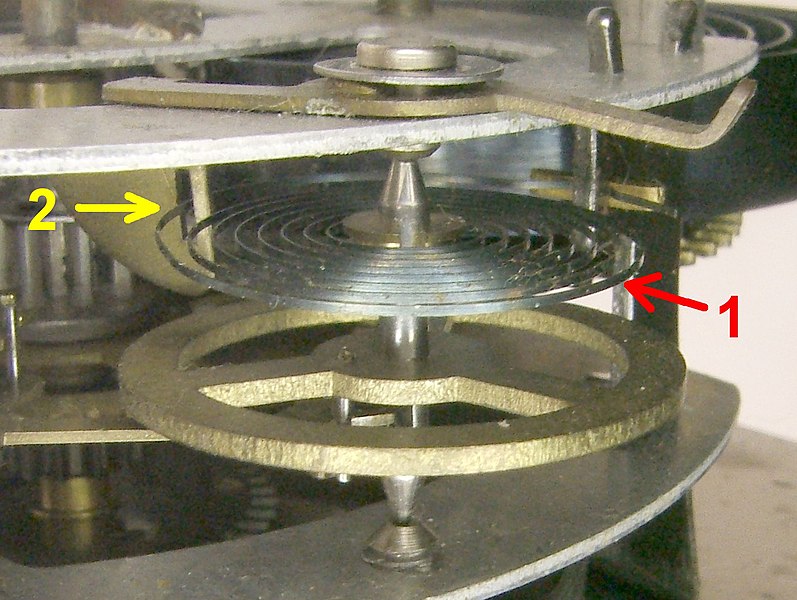 |
| An actual timekeeping device. Source: "Nature" journal, September 22, 1887, pp. 485. For all the tiny parts and clever engineering, mechanical watches are awfully old. |
The same thing happens with a mechanical watch or clock. The wound mainspring is like the weight/pulley system when the weight is all the way up at the ceiling. You, if you decide to pull back on the rope and slow the pulley's descent, are like the escapement: you control the release of potential energy in the system. If there were no escapement, all of the energy in the spring would be released in a very short amount of time. (Quick physics note: energy per unit time is defined as power, or P = W/t. The maximum energy in this system is constant [due to the physical limitations of the mainspring], so as time gets very small, power gets very big. Thus, a hole in your floor.)
 |
| Oops. |
By regulating the power output at a very precise rate, the escapement turns all those gears into a useful way to keep track of time. The escape wheel is shaped differently than the rest of the gears. The teeth look a little bit like those things that keep you from driving back into parking garages once you've left.
 |
| Courtesy of Guardian Traffic Control Systems. |
And with good reason - their purpose is really the same: to allow motion in one direction, but not the opposite. In a watch, the fourth wheel meshes with the escape wheel's pinion (gear with fewer teeth than the main gear that spins on the same axle and with the same angular frequency as the main gear). The pinion turns the axle, which turns the escape wheel. However, the bow-shaped bit on top of the escape wheel prevents it from spinning freely. The anchor (bow shaped bit) rocks back and forth to allow only one tooth at a time to escape.

Every time the anchor swings in one direction, it also gives a little push to what's called the balance wheel.
 |
| Credit to Chris Burks for the photo. |
So I thought I was done with tracing the energy through a watch, but take a look at this picture from horologist.com:
What's a crown wheel? or a click spring? or a click, for that matter?
There is more work to be done here.


No comments:
Post a Comment